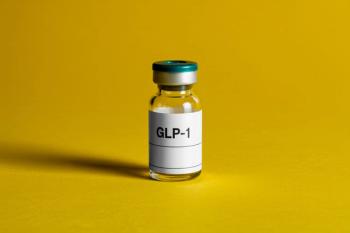
DSM-5 Will Medicalize Everyday Worries Into Generalized Anxiety Disorder
The thing to remember that there is not a pill for every worry or life problem and that pills can sometimes make things worse.
I recommend an interesting blog on Generalized Anxiety Disorder (GAD) written by Bruce Jancin in
His basic point is that the changes suggested by the DSM-5 work group are likely to dramatically increase the existing already high rates of GAD. There are 2 parts of the DSM-5 proposal that would lower the threshold for the diagnosis. First, there is a reduction in the required duration of anxiety symptoms--from the DSM-IV 6 months to just 3 months (originally this was to be set at only 1 short month, but thankfully the work group has halfway come to its senses). Second, the number of required associated symptoms would be only 1 out of 4, rather than the more stringent DSM-IV criterion of 3 out of 6.
The work group's rationale for these lowered thresholds is completely unconvincing and the evidence offered to support them is remarkably thin. Before making such radical changes, we should have extensive data on their likely impact on prevalence, on the delicate balance between missed and excessive diagnosis, and on the trade offs between risks versus benefits. Without these, the work group is flying blind and recklessly.
Indeed, there are no data currently available to tell how much rates of GAD will rise if the changes are accepted. And the DSM-5 field trials will not be at all informative because they have been designed with a fatal flaw that renders them useless-- the failure to directly compare the differing rates using DSM-5 versus those with DSM IV. I predict that rates of GAD may double (or more), especially once DSM-5 makes it such an inviting drug company target. Given a strong industry push, GAD could easily become one of the most common of mental disorders.
Why is this such a bad idea? The symptoms of GAD are extremely nonspecific and very common in the general population. They merge imperceptibly into the expectable worries of every day life and the normal reactions to common stressors. There are simply no bright lines separating someone who has a real mental disorder from the normal worry wart or the person with a lot of problems that actually do need worrying about. Any rapid expansion of the diagnosis of GAD will surely capture many of these false positive individuals who do not have clinically significant symptoms that require mental health diagnosis or treatment-- people who would be better off left alone without further intervention.
But the way the world works, most people who get mislabelled will likely wind up receiving medication-- usually antidepressants, and sometimes the much more problematic antianxiety drugs. Mild anxiety symptoms have a very high placebo response rate (around 50%)--quite close to the response rate achieved by medication. Although the majority of patients mislabelled as having GAD will not actually need medication, they will often receive it and may feel compelled to stay on it for the long term-- with all the attendant unnecessary side effects, complications, cost, and stigma.
The thing to remember that there is not a pill for every worry or life problem and that pills can sometimes make things worse. Of note, DSM-5 is also suggesting another related change that will lead to even greater diagnostic inflation--a new disorder mixing common symptoms of anxiety and depression and requiring a remarkably short duration of only 2 weeks. Taken together, the 2 changes would capture a large segment of the worried well.
It makes no sense whatever to suggest such radical expansions in the definition of mental disorder (and a concomitant reduction in what is considered normal) without any of the crucial data that would allow us to predict their potential impact. Before leaping into the dark, we should know what are the likely false positive rates caused by the shortened duration and reduced symptom criteria for GAD, what are the risks and costs of the consequent over medication, and is there really a current problem of under diagnosis that requires us to change its definition. Rule of thumb: if a diagnosis ain't broke, don't try to provide a fix that may have its own dangerous unintended consequences.
The DSM-5 changes in GAD need to be studied particularly carefully in primary care settings where most psychotropic prescriptions are actually written, often after a brief evaluation by someone with little training, interest, or expertise in psychiatric disorders.
The poorly thought through and insufficiently supported GAD suggestions illustrate what is wrong with how DSM-5 is being done. A small group of anxiety disorder experts get to expand their turf by lowering the thresholds for a pet diagnosis--with little consideration for the possible negative consequences. They mean well in their effort to reduce false negatives and are not motivated by any desire to help the drug companies (more on this in my next blog). But good intentions are not enough. The work group underestimates the risks of false positive diagnoses and of the resulting unnecessary treatment. They don't consider how the lowered thresholds will be applied by less expert hands in primary care settings or what will be the impact of the aggressive drug company marketing of GAD to professionals and to potential new customers.
In the preparation of DSM-5, the experts on the work groups have been given far too much freedom and far too little supervision. Their suggestions for changes are supported by cursory and one sided reviews that seize on the occasional study and ignore all that is unknown or contrary. Suggested changes should have been subjected to the much more stringent standards of evidence based medicine as applied by independent reviewers. The DSM-5 field trials should have been designed specifically to study the crucial question of impact on rates, not the fairly trivial question of reliability. A searching risk/benefit analysis needs to be done on each suggestion.
What is clearly broke and cries out for fixing is the DSM-5 process itself.
Newsletter
Receive trusted psychiatric news, expert analysis, and clinical insights — subscribe today to support your practice and your patients.














